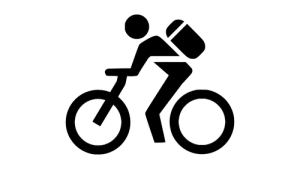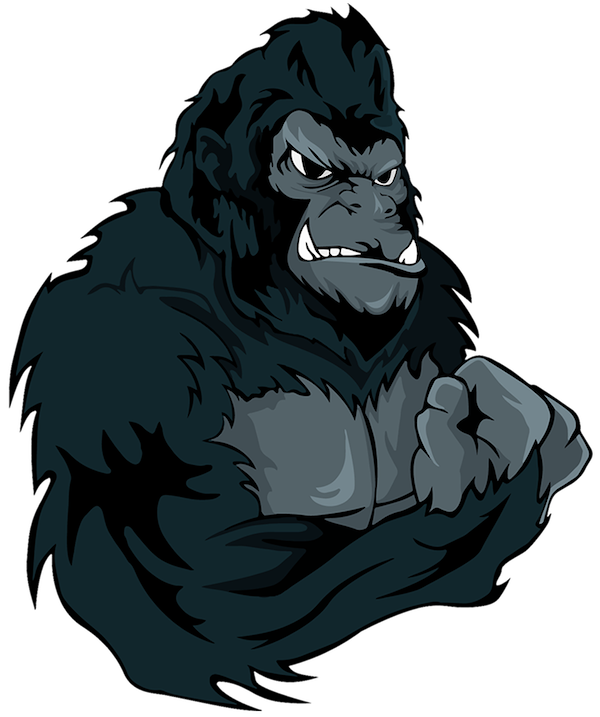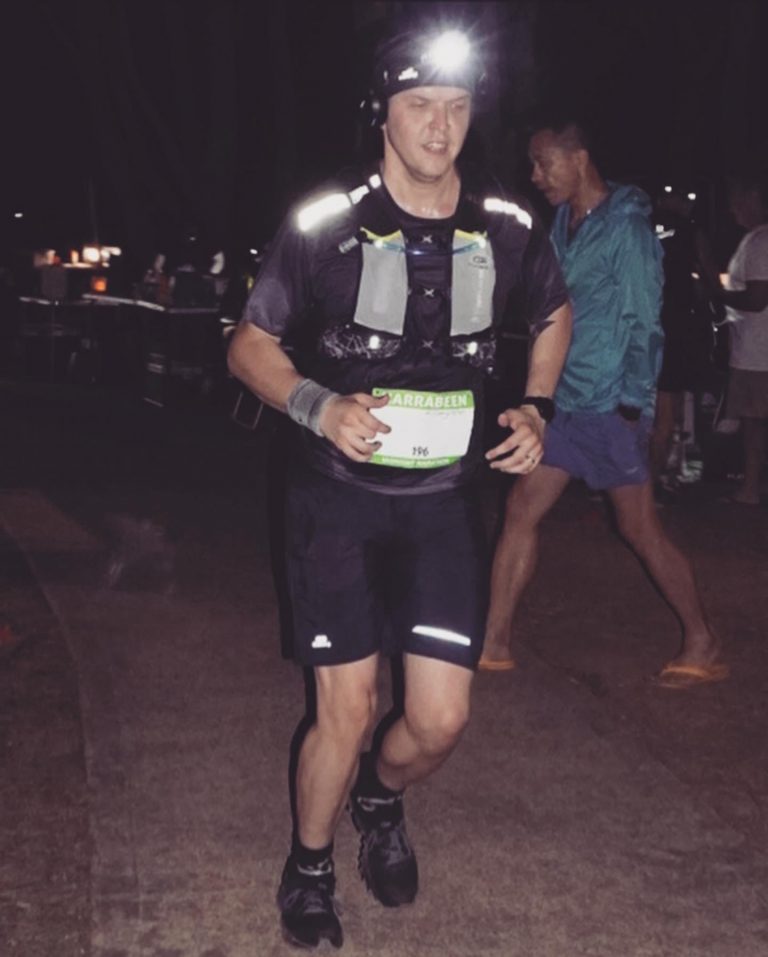When I first started training for my first half ironman, I was regularly going
to the gym, swimming, and running. I was cycling a bit here and there but not at the training level that I wanted to at that time which will boost my skill to compete for the ironman.

I changed things up a bit and incorporated more cycling sessions to my program. In the gym, I used the stationary bike, and early morning and late evenings, I will cycle for a few kilometers. The first time any kind of injury hit me, I knew that cycling was the culprit.
The first injury I had was soreness from riding the saddle. It was a combination of feeling bruised in my inner legs as well as feeling my skin burning a bit after the adrenaline dies down. It’s not intolerable but it also left me parking my bike for a few days.
I’ve also experienced getting neck pains from all the biking that I was doing. I made sure that I was in the proper form all the time because that was important to me and the proper form took some time getting used to. It was alleviated by a few massages but it happened to me nonetheless.
You may think that the only thing that could happen to you while your cycling is actually falling from the bike, but even on it, your body goes through strains. The question is: how can you prevent injury while cycling? What are the things you should keep in mind in order to be as much as possible, injury-free?
I’ve outlined some of them below, and shared my own personal experiences as well.
So, How Can You Prevent Injury While Cycling?
1. Preventing Saddle Sores
As one of the few things that I started experiencing, let me discuss this first. Saddle sores are actually considered a skin disorder which is caused by the friction of the bike’s saddle, your skin to your bones, and your cycling shorts. The great thing about it is you can prevent it by doing a few things.
One, make sure that your saddle isn’t on too high. A higher saddle can cause more motion on the pelvis, making you more prone to friction due to the continuous side-by-siding. A bike at the proper saddle height will allow less friction which will eliminate the discomfort from the saddle.
You should also make sure that you’re wearing fairly new or good condition cycling shorts. Older shorts tend to be too worn out and the padding would’ve thinned out already. I’m not saying buy new shorts every time but check to see if your padding is still intact. You can buy a few pairs that you can use alternately so as not to wear and tear one immediately.
When the sore already starts happening, the best thing you can do is to just apply a cream. Chamois creams are a great option as it has soothing elements like Aloe Vera or some kind of butter. Some dermatologists would recommend antiseptic creams or gentle antibiotics especially if it worsens. You can never go wrong with ice as well.
2. Avoiding Neck Pains
The main muscle points that get triggered when you start experiencing neck pains are the upper trap muscles. This starts from the nape down to the neck then to the shoulder. The main reason why this part of your body starts to strain is that its main purpose is to ‘carry’ your head. On an angle where your head is constantly extended during cycling, the muscles get stressed and worn out at some point.
The first prevention that you can incorporate into your daily workout is neck and shoulder exercises. When you strengthen these muscles, they’re more likely to handle the strain and less likely to cause intolerable pain. As with anything, I truly believe in prevention.
This can also be addressed by the fit of your bike. Through a bike-fitting expert, request that your stem be shortened a bit and moving your seat a bit forward to allow you to be in a slightly more upright position. Just make sure that you are still comfortable, a few tightening here and there in your bike can cause another injury or two.
EDITORS TIP: loosen the grip on the bike handles. In my earlier training days, this is one habit that I was unconsciously doing and it put a lot of pressure on my traps. I didn’t even realize that I was doing it until I started having small blisters on my hand. When you relax your grip as much as possible, there’s less pressure on the traps.
 Editor’s Corner
Editor’s Corner
Loosen the grip on the bike handles. In my earlier training days, this is one habit that I was unconsciously doing and it put a lot of pressure on my traps. I didn’t even realize that I was doing it until I started having small blisters on my hand. When you relax your grip as much as possible, there’s less pressure on the traps.
3. The Almost Inevitable Back Pains
This is probably one of the most dangerous injuries that you can sustain during your cycle life as it may lead to more serious conditions involving the spine. While cycling, you’re also putting pressure on your lumbar region or simply, lower back muscles.
Riding for too long can be a culprit of this injury and bike fit as well. That’s why it’s crucial that you take your bike and consult a bike-fitting expert (not just the manufacturer you bought your bike from). Besides this, the only way you can prevent back pains is through core training.
This is why it’s important not to neglect gym time even if you’re training for your ironman marathon. Core training will strengthen the muscles that are essential to support your lower back. A weak core will entail that your lower back needs to exert more effort than it needs to, which forces it to make up for the lack of support from the core— inevitably leading to back pains.
4. Fighting Knee Pains
Cyclists will often get knee pains as a result of long hours on the saddle or riding a saddle that’s lower than it should be. The main muscle group that gets stressed when this happens is the patella, anterior and posterior knee (front and back) as well as lateral and medial parts of the knee (sides).
The knee is a complex joint, and with its complexity comes a variety of injuries that can happen to cyclists. But it all boils down to again: bike fit. Anterior knee pains can be caused by the saddle being too low or being brought to forward. While the posterior muscles can be injured if you have a saddle that’s too high up which causes overextension of the muscles.
Lateral and medial knee pains are caused by cleat mispositioning. Your cleats must not be tilted in any way but upright. Besides proper bike fit, you should also work on your gluteal muscles to ensure that the quads and hamstrings which impacts the knees wouldn’t be overworked.
5. Getting Rid of Achilles Tendon Pain
Your Achilles tendon is the muscle at the bank of your ankle. This connects your calves to your heels. The main culprit is when foot to pedal contact: when you’re foot is farther from the pedal, it causes strain on the Achilles tendon.
Another culprit is saddle height. If your saddle is too high, the tendency is you tiptoe while pedaling. Your cleat positioning can also be the reason why you’re experiencing pain in your Achilles’ tendons. When your cleats are positioned way too forward, you’re in a tiptoe position as well.
6. Avoiding Ankle Pain
The ankle is the area where your foot and your leg meets. There are a few reasons why you would experience pain in this area.
First is your positioning. For the longest time, bikers believed that ankling is the best way to ride your bike. Ankling is basically allowing an exaggerated range of motions from your toes in the pedal as you pedal stroke. This can lead to ankle pains and it’s advisable that you move as naturally as possible while following the flow of the pedals.
Similar to Achilles tendon pains, cleat positioning is a factor why you’re experiencing ankle pains. If your cleats are way forward, your feet are going to compensate by using your toes on the pedal which causes major stress on the ankles. Consult your bike-fitting expert and adjust your cleats accordingly.
Conclusion
There you have it. If you notice, the three main culprits of any cycling injury or pain are form, positioning of your equipment, and over-biking. There are still a lot of muscle groups that can be injured while on the saddle, but these three things are your initial things-to-check to prevent major injuries.
Besides all this, you also shouldn’t overlook your basic road rules. Often when I think about injury, I immediately think it’s falling off the bike— which can also happen. So, always make sure that you have good visibility, observe road rules if you’re road biking, and keep focus. If you’re looking to take the next level, having the ride pedals can also assist in safety. Check out the best road bike pedals I’ve reviewed previously if you’re interested to find out more about them as I’ve also written a guide.
While these injuries and muscles pains are inevitable, what we do before and after biking is our control. Safety is the number one priority all the time. Let me know in the comments what you do to prevent injuries and I’ll be glad to read all of them. And hey, if cycling outdoors isn’t for you as you tend to be prone to injuries then check out the best exercise bikes to lose weight which I’ve reviewed to help keep you indoors if that’s your thing!
Sources:
1. https://www.cyclingweekly.com/fitness/cycling-knee-pain-everything-you-need-to-know-329957
2. https://www.active.com/cycling/articles/how-to-prevent-the-6-most-common-cycling-injuries/slide-6
3. https://www.cyclingweekly.com/fitness/common-cycling-injuries-349671

Marko Rakic is a trail runner and fitness enthusiast from Sydney, Australia. He is the lead writer for The Ultimate Primate and believes the best way to live a happy life is through constantly challenging yourself.
